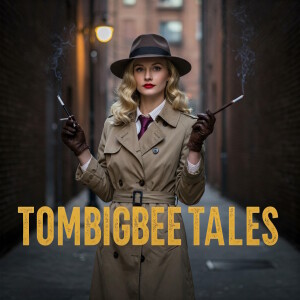Episodes

3 days ago
3 days ago
Columbus Housing Authority has hired violent felons with no business license, no bond, etc. to work on their properties...and about that credit card use by the Executive Director Robert Greathree Jr...woo hoo...someone is living high on the hog on our federal tax dollars!

7 days ago

Friday Jun 13, 2025
Friday Jun 13, 2025
Why are large amounts of money being moved between accounts at the Columbus Housing Authority? Why is the movement of hundreds of thousands of dollars not mentioned in their meeting minutes? Who is managing the money and why are they so cavalier with their funds?

Thursday Jun 12, 2025
Thursday Jun 12, 2025
Why was a check for $75,000 made to Cash by the Executive Director of the Columbus Housing Authority, and it is not reflected in any meeting minutes to the board of commissioners before or after the event? Where did that money go? To the nonprofit Columbus Community Housing Development Organization (CCHDO)? Is anyone paying attention to where money goes at CHA or how it is spent at CCHDO? So many questions arise every turn of the page.https://youtu.be/io1t0qAjaLg

Wednesday Jun 11, 2025
Wednesday Jun 11, 2025
Follow along as I examine the Columbus Community Housing Development - (The Columbus Housing Authority's Non-Profit) Negative Revenue Balances. We will learn how to search the Mississippi Secretary of State Business Listings for Businesses and Charity Listings, Agents, and Members, as well as their compliance with yearly updates. Why is Seasons of Columbus included as a DBA but not Seasons of Success? Where is Seasons of Success EIN and State License to operate? Do they fall under some other business? Again, why is nothing related to the Columbus Housing Authority ever transparent and straightforward? (The video of the how-to is on YouTube).

Tuesday Jun 10, 2025
Tuesday Jun 10, 2025
When it comes to nonprofits, there's a lot that you need to know. You can ask for it in a public records request, but it's not really considered a public records request because nonprofits are guided by their nonprofit status. What you can access are their 990s, their tax filings. Here is how you do just that. (Visual version is also available on YouTube. This is just the audio version.)

Sunday Jun 08, 2025
Sunday Jun 08, 2025
Public records are just that: Public! You are entitled to have information from government officials in the form of bank ledgers, meeting minutes, contracts, bids, emails, etc. Public Officials' and Private Individuals' Land and Property Tax Records are all in the public domain. You just have to go to your county courthouse or look at their website online and do some research!
(PS: there is a YouTube video that shows the actual screen view if you are a visual person).
Here is how:

Saturday Jun 07, 2025
Saturday Jun 07, 2025
Rusty Walker is earning $ 4,295 a month from Columbus HA. He is also receiving fees from Natchez, Hattiesburg, Brookhaven, and McComb Housing Authorities, as well as having some contracts with the City of Gulfport, in addition to his salary as a councilman for the city. I can’t imagine money should be an issue, as he appears to be a successful businessman. So why are his property taxes always delinquent? He is a Capital Funds Manager for Housing Authorities all over the state with significant budgets funded by HUD. He is an elected official responsible for millions of dollars for the City of Gulfport. Do they know he forgets to pay his property taxes? Did his opponent know he has a questionable track record where money is concerned? Is this the same man who was borrowing and then lending a million-plus dollars not even 10 years ago? Why does everything around Councilman Walker generate so many questions?

Friday Jun 06, 2025
Friday Jun 06, 2025
Gulfport's City Council President and Futurespec's Rusty Walker have been playing a shell game with money and land for some time in Gulfport while consulting for various housing authorities in his spare time. Why? According to HUD and area directors, there is absolutely no need for companies like Future Spec to do the day-to-day coding and grant fund management. That they are hired to do. The directors have so many opportunities to learn both online and in person, and HUD and various state-level agencies provide continuing credits, ongoing training, and support to those executive directors.Why are we mixed up with this guy and paying him to do something our Executive Director SHOULD be doing?

Sunday Jun 01, 2025
Sunday Jun 01, 2025
Unravel the financial irregularities in this community housing organization. Let's take a deep dive into the financial transparency, or lack thereof, and the organizational accountability that is missing at the Columbus Housing Authority. From single and rubber-stamped signatures to initialed checks with no invoice or purchase order numbers...the financial mess at both the Non-profit CCHDO and the CHA is appalling.

Fresh Spilled Tea & Truth on Tap
Shannon Evans is a Southern storyteller who works in the field of public history. She likes hanging out with dead people in and around her home state and tells their stories with laughter, facts, and the uncomfortable truths of their lives.









